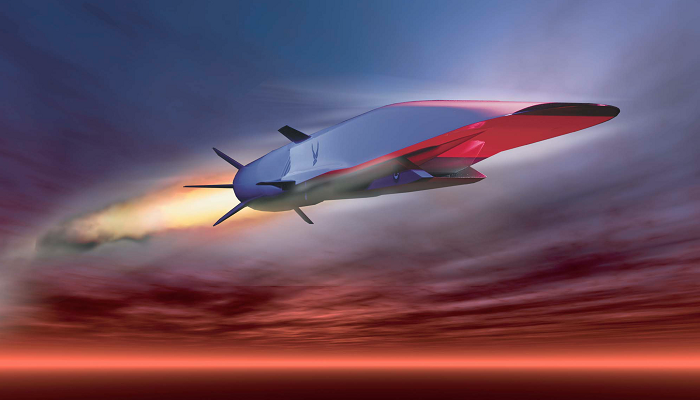
India is constantly developing new arms and improving on previous versions of its weaponry with security challenges increasing, both from within and across borders, the country seems poised to continue with its development agenda.
1 HAL AMCA && FGFA

HAL AMCA is a super-maneuverable multirole combat aircraft designed for the air superiority, ground attack, bombing, intercepting, Strike and other types of roles. It combines supercruise, stealth, AESA radar, maneuverability, and advanced avionics to overcome and suppress previous generation fighter aircraft along with many ground and maritime defences.
It has state of the art systems, flight surfaces and controls, and two internal weapons bays which can each carry four air-to-air missiles. It also comes armed with a 30 mm cannon. The HAL AMCA is expected to have a top speed of Mach 2.5 and be able to operate at an altitude of nearly 60,000 feet.
2 Agni-VI

Agni-VI is an intercontinental ballistic missile under development by the DRDO for the use of the Indian Armed Forces. Agni-VI will be a four-stage intercontinental ballistic missile. Agni-6 will carry a massive three-tonne warhead, thrice the weight of the one-tonne warhead that Agni missiles have carried so far. This will allow each Agni-6 missile to launch several nuclear warheads -Multiple Independently Targetable Re-entry Warheads (MIRVs) – with each warhead striking a different target.
Each warhead – called Maneuverable Reentry Vehicle (MARV) – performs evasive maneuvers while hurtling down towards its target, confusing enemy air defence missiles that are trying to destroy them mid-air. And these maneuverable warheads will give Agni VI an extended range exact figure of which is currently classified.
3 INS Vishal

INS Vishal is currently under development and is expected to be commissioned in 2025. It will be nuclear powered (allegedly) and nearly 50% larger than INS Vikramaditya.Aircraft’s like DRDO AURA are expected to operate for the carrier.
INS Vishal will be able to accommodate up to 55 aircraft (35 fixed-wing combat aircraft and 20 rotary wing aircraft), launched using a catapult assisted take-off but arrested recovery (CATOBAR) aircraft launch system, incorporating U.S. defense contractor’s General Atomics’ new electromagnetic aircraft launch system (EMALS) technology.
4 BrahMos-II or BrahMos Mark II

BrahMos-II is a hyper-sonic cruise missile currently under joint development by Russia and India. It is speculated that it will travel at a speed of Mach 7 and have an operational range of 180 miles. It has the ability to be fired from ships, submarines, aircraft, and land, and is a versatile missile that will strike fast. It will hit with a mighty force to destroy hardened and buried targets such as bunkers and storage facilities. It is scheduled to be ready by 2020.
5 HAL Tejas MK-II

The HAL Tejas MK-II is a multi-role light combat fighter aircraft with stealth capabilities. The MK2 is an improvement over LCA Airforce Mk1 with higher thrust engine. This aircraft will have improved survivability, maintainability and obsolescence mitigation. Active Electronically Scanned Array (AESA) Radar, Unified Electronic warfare Suite (UEWS) and On-Board Oxygen Generation System (OBOGS) are some of the state of the art technologies planned to be integrated. The cockpit design has been improved with bigger size, smart Multi function Displays (MFD) and smart Head Up Display (HUD).
6 Future Main Battle Tank-India :

Currently Indian Armed Forces use/or use in near future three different types of main battle tanks and six different series of main battle tanks.
Arjun series tanks are the indigenous battle tanks which was developed keeping in mind to tackle M1 Abrams which was a potential weapon for Pakistan. However since our requirements changed, Arjun has lost the place .
Rather now Indian Army wants more lighter tank with advanced armour protection
and enhanced fire power.
Impressed by Russia’s T-14 Armata MBT India started to there own future Main Battle Tank development programme.
7 INS Aridhaman Class Submarine

INS Aridhaman is the second Arihant-class submarine.It is the second nuclear-powered ballistic missile submarine being built by India.Even though the same class as INS Arihant, It will feature 8 launch tubes instead of the 4 giving her double the firepower of Arihant.
8 Aura UCAV

AURA is an autonomous unmanned combat air vehicle (UCAV),The ADA describes the AURA as a “self-defending high-speed reconnaissance UAV with weapon firing capability”.The project is being developed by the Defence Research and Development Organisation for the Indian Air Force and Indian Navy. The design work on the UCAV is to be carried out by Aeronautical Development Agency (ADA).
9 PAD/ AAD BALLISTIC MISSILE DEFENSE (BMD) SYSTEM, XRSAM && S400

The Indian BMD program raised eyebrows when it was first announced and has come a long way since. It has been successfully tested against a short range ballistic missile and is reportedly deployable at short notice to protect major cities.
Two interceptor missiles, the PAD (Prithvi Air Defence) and the AAD (Advanced Air Defence) along with the Green Pine radar form the core of this system. The PAD is an exo-atmospheric interceptor with a ceiling of over 80 km and a range of over 2000 km. It is used to intercept ballistic missiles which are travelling outside the Earth’s atmosphere.
The AAD is an endo-atmospheric interceptor with a range of 250+ km and a ceiling of 30 km. It’s used to intercept short-range ballistic missiles. Both these missiles initially guided by an Inertial Navigation System (INS) and have an active radar seeker for homing in on the target.
10 Project-75I Submarine Project

The Project 75I-class submarine is a follow-on of the Project 75 Kalvari-class submarine for the Indian navy. Under this project, the Indian Navy intends to acquire 6 diesel-electric submarines, which will also feature advanced Air-independent propulsion (AIP) systems to enable them to stay submerged for longer duration and substantially increase their operational range.
In October 2014, the project got clearance from Defence Acquisition Council. All six submarines are expected to be constructed in Indian shipyards.

Post Your Comments